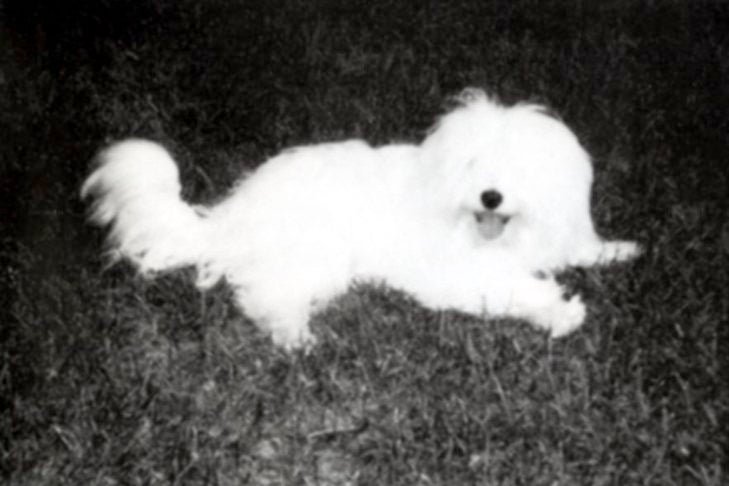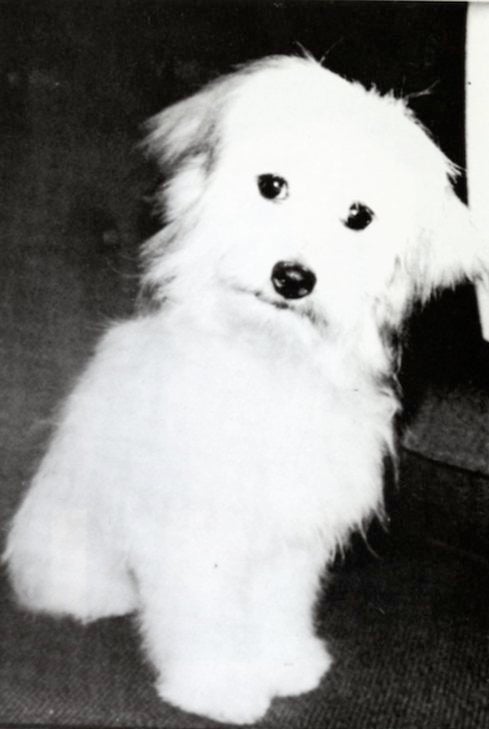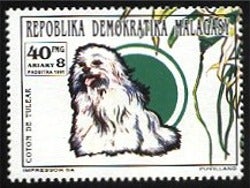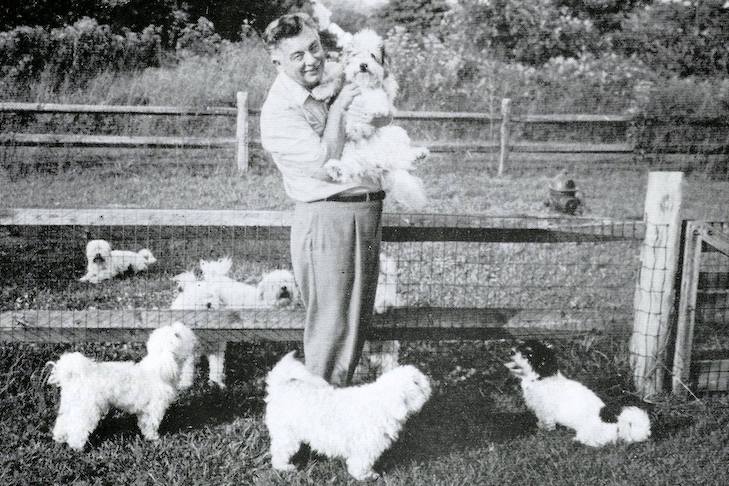Some see a stuffed toy or a mound of whipped cream with a nose and two black button eyes.
Most say they see a “walking cotton ball,” and that’s pretty much on the mark because the first part of the breed’s name is the French word for cotton.
Fluff aside, the dog known as the Coton de Tulear (the second word a nod to the port where they first landed in Madagascar) can be remarkably tough, and their unique personality is reflected in some of the weirdest legends in all of canine history.

Legends & Folklores
First, there’s the tale of how these dogs made it to Madagascar.
Madagascar, 250 miles off the coast of Africa, has long drawn traders from Portugal, France, and other European countries, as well as Asia and the Middle East. Pirates also roamed the region. The theory goes that a variety of little white dogs accompanied these travelers. In the 16th century, a shipwreck off the coast killed everyone on board, except for a few four-legged passengers. What saved them? Their puffy white coats formed natural life jackets and kept them afloat as they dog paddled to shore.
Once on Madagascar, they headed for the jungle, feral fluffies running around with the ring-tailed lemurs and giant chameleons. This is the setting for the most bizarre tale—Coton vs. the crocodiles.
The story goes that every so often, one of these dogs, standing at about 8.5 to 12 inches tall and weighing somewhere between 8 and 15 pounds, wanted to cross a river teeming with 1,000-pound-or-so hungry reptiles. He would set up a ruse by running to one point on the bank and barking to wake the dead, sounding the dinner bell for all the crocodiles in the area. The noise would lure the crocodiles, and when they had congregated, the little dog would dash up river and cross in safety, leaving a bunch of bewildered crocs wondering where the snack went. Variations on the theme have one dog acting as a decoy, allowing the pack to cross in safety.
Don’t bother comparing them to their Bichon Frise cousins. These tiny white dogs led much different lives, hunting and scavenging to survive the wilderness.

Favored by Madagascan Royalty
In her book, Coton’s World, Eli De Luca says that a 17th-century governor of Madagascar, Étienne de Flacourt, is credited with the first written record of the wild forerunners of the sweet housepets of today. “Quantity of dogs which are small, have long snouts and short legs like foxes. There are some of them that are white.”
Packs were still around two centuries later when zoologist Guillaume Grandidier observed, “Poor starving animals that roam in villages, fighting for the most squalid pig’s garbage, or that go away in the bush where they survive on their hunting as wild animals.” Necessity turned them into extremely sturdy, robust survivors. It’s even possible the tropical Madagascar climate led to the development of the Coton’s light, airy coat, which acts as a built-in cooling system.
By the 19th century, the tribal monarchy Merina became fascinated with the wild, white dogs. They became favorites among the monarchy, hence the nickname “the Royal Dog of Madagascar.” Ownership by commoners was forbidden.

The Coton de Tulear eventually earned official-dog status, with postage stamps created in their honor. During the 1970s, this island treasure reached other shores, first France and Belgium, and then America.
Cotons in the US
Jay Lewis Russell is known as the father of the breed in the United States. He opened Oakshade Kennel, the first breeding program of Cotons de Tulear in the Western Hemisphere. Russell discovered the breed from his son, a graduate student in Anthropology who made several research expeditions to Madagascar and regaled him with stories of this happy, highly energetic cotton-fluff of a dog.

Russell founded the Coton de Tulear Club of America (CTCA) and his dog, Jijy of Billy was the first dog registered with the CTCA 1974. Russell quit his engineering job to devote himself full-time to breeding and promoting Cotons with unflagging enthusiasm. He remained the only source for puppies until the late 1980s.
The United States of America Coton de Tulear Club was formed in 1993, just as demand for Cotons de Tulear took off. Demand continued to grow into the 2000s. In 1995, there were only 16 Coton breeders in the U.S. The breed was finally recognized by the AKC in 2014.
In 2020, the Coton was the 81st most popular dog breed, out of 195.
Legends of the Coton de Tulear’s origins continue to fascinate. In fact, it may all seem ludicrous, until you get to know the Coton de Tulear. Coton people will tell you there’s a grain of truth in all the stories, especially in what they say about the breed’s spirit.

